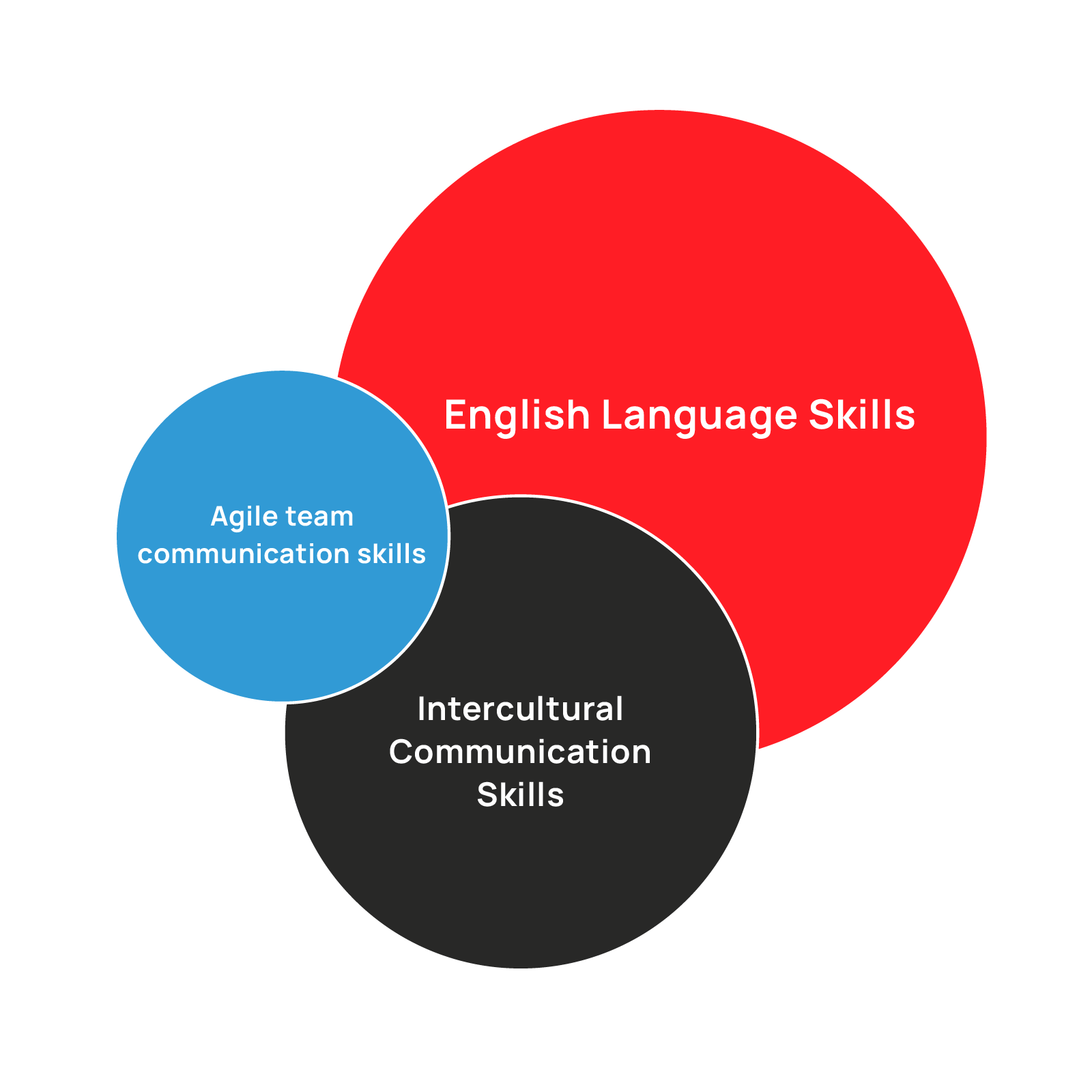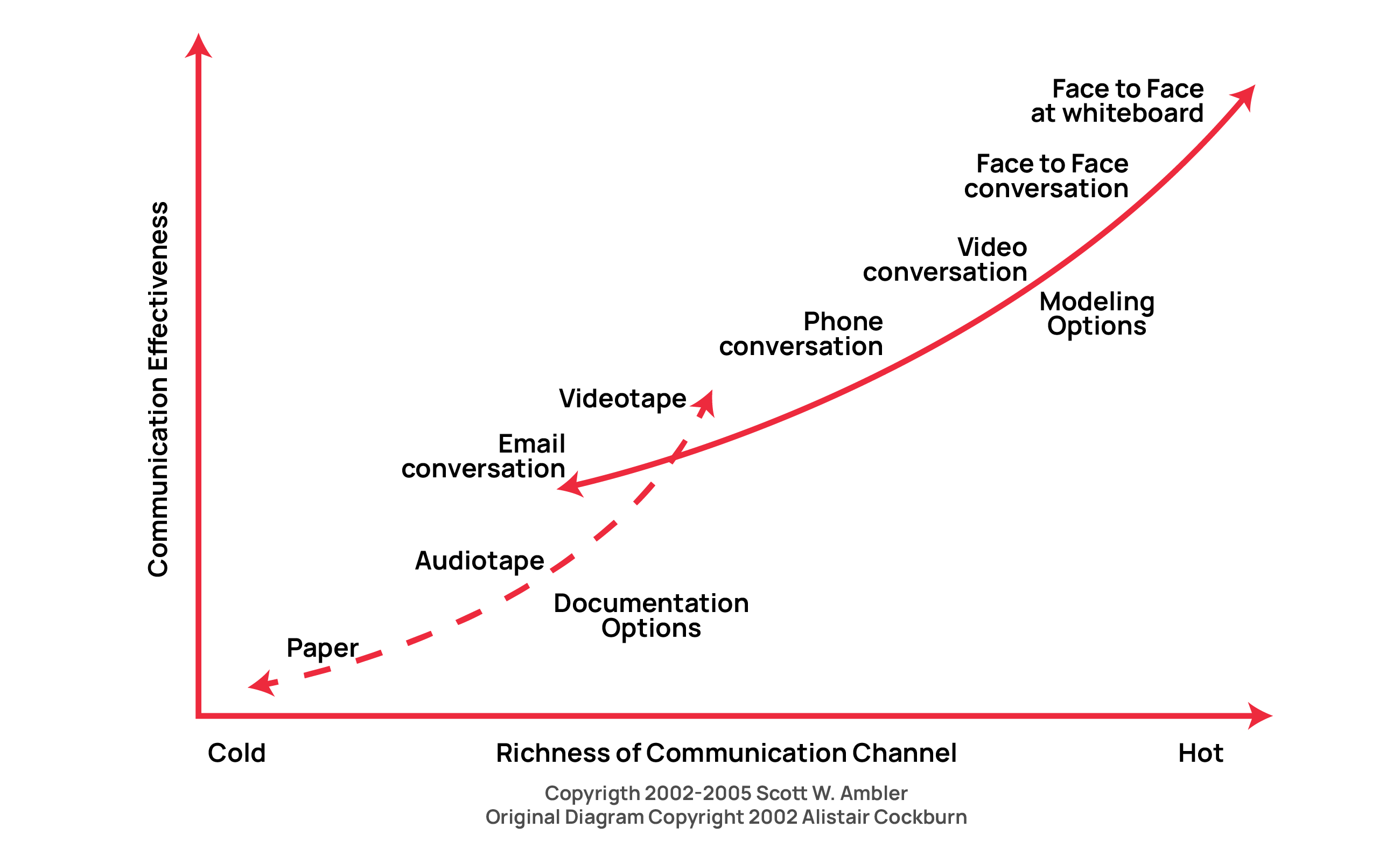Article Contents
1. A Tested Approach to Communication in English Training for the Software Industry
2. Cultural Similarities
3. English skills in the Global Software Industry
4. At Jalasoft, we prioritize communication
PROFESSIONAL DEVELOPMENT
Communication is a determining factor for success in software development services, Jalasoft has invested in English communicating skills as a key engineering training strategy for growth. Discover here the proven approach for success.

1. A Tested Approach to Communication in English Training for the Software Industry
2. Cultural Similarities
3. English skills in the Global Software Industry
4. At Jalasoft, we prioritize communication
English has become the default communication language for global software development teams. Communication in English is a key skill in every development step, but Latin American software development companies often lack a proper management approach. Offshore software services outsourcing from Latin America is a growing trend, and investing in communication in English as a key engineering training strategy is essential for growth. This is where team augmentation services can make a significant impact by integrating skilled professionals who are already proficient in English and can communicate effectively with international teams.
The challenge of communication in English is very real in Latin America, where, according to the Education First - English Proficiency Index 2022, there is a moderate level of English language proficiency above Africa and the Middle East. Although the region has improved in the last half-decade, it is still far from having an important amount of people mastering the language.
Due to this context, Jalasoft has invested significantly in equipping its engineers with the essential communication skills for success since 2008. As a result of this program, 65% of trainees are currently employed in the industry, showcasing its effectiveness and positive impact. There is no doubt that Jalasoft's success story in the global software industry has a critical part of its footing on the communication in English skills that our engineers have achieved.
The Jala communication in English training program for global software development started a decade and a half ago to address a growing difficulty in communication at Jalasoft. The program addressed both situations, which affected the company’s engineering services business. It evolved to support engineers who continuously need to improve their communication skills in the language. Through our history of work in the global software development industry, we have verified that English communication skills are as critical as technical skills for each engineer and the whole team.
Proficiency is the largest piece of an effective communication strategy for English as a Second Language (ESL) speakers for global software development. However, other components are also critical to achieve an acceptable quality of communication. We can place most of the other communication elements into two other groups; intercultural communication and agile communication in software development teams, as described in Figure 1 below.

Among the program's early results is a noticeable increase in the trainees' awareness of the importance of English as the default language with customers and peers abroad in our industry. People who go through the program promptly enhance their awareness of the significance of communication in English and intercultural communication for their daily work. Trainees acquire an understanding of the frequent intercultural communication scenarios within the software industry.
More than 1000 engineers have gone through the program since 2008, of which approximately 65% are actively working with Jalasoft in the global software industry as a result of this training.
These engineers have acquired sufficient proficiency to communicate effectively in English and continuously strive to enhance their communication skills, adapting to the ongoing evolution of challenges and opportunities in the industry.
Problems in intercultural communication arise when messages are incorrectly interpreted. In this process of understanding a message, it is the person who receives the message that interprets it using a set of values, beliefs, and expectations of behavior. In order for a common understanding to be established, these elements should be similar to those of the person that sent it. If a misunderstanding occurs, people frequently attribute it to the other person involved in the communication. This frequently breaks trust, which is a key element of effective communication.
Below in Figure 2, you can find an example of an intercultural communication, between what a native British speaker says, what he means and what a Dutch listener understands from the same words. This is an example that helps us understand that intercultural communication is complex even among speakers with a native or high proficiency in the English language, and that the interpretation of messages may vary.

When working together in agile development teams, several channels of communication may be used: from Emails to video calls. Several aspects (linguistic and non-linguistic) can prevent a conversation from being successful.
Using the channel with the greatest richness of communication maximizes your chance of a successful outcome. However, in global or virtual teams, there are frequently fewer options regarding which channel may be used for modeling purposes, thereby adding to the intercultural and linguistic challenges that already exist. This provides a complex environment that increases the probability of misunderstandings or incorrect perceptions.
In Figure 3 below, Alistair Cockburn, contends that the most effective one is person-to-person, face-to-face, particularly when enhanced by using a shared modeling medium such as plain old whiteboard (pow) or other simple channels. As the richness in the choice of communication channel falls you lose physical proximity and the cues that it provides; you also lose the ability to use analogic techniques like gestures and other nonverbal expressions.

Communication in English is a key strategic investment for any Latin American software services outsourcing company. Any other strategic advantage, like being in the same time zone as customers in the United States, loses its strategic value if the team does not have enough communicative skills to work with customers effectively.There are benefits of being an English-speaking specialized company, some examples are:
Global Clients:
English is the international language of business and the software industry. By training engineers to communicate effectively in English, outsourcing companies in Latin America can tap into a larger pool of global clients. Many clients from North America, Europe, and other regions prefer to work with service providers who can easily communicate in English, especially when engaging in team augmentation models that require seamless integration with their existing teams.
Global Collaboration is in English:
Effective communication is crucial for collaboration between teams located in different countries. English proficiency enables engineers from Latin America to seamlessly communicate and collaborate with clients, stakeholders, and team members from other parts of the world. Clear and efficient communication in English helps in understanding client requirements, addressing queries, providing regular updates, and coordinating project activities, leading to improved collaboration and overall project success.
Inter-Cultural Communication:
Effective communication in English fosters cultural understanding and promotes a positive working relationship between engineers from Latin America and their international counterparts. It helps bridge cultural gaps, promotes diversity and inclusion, and creates a harmonious work environment. This cultural understanding can lead to increased client satisfaction, better teamwork, and improved long-term relationships with global clients.
Global Project Management:
In nearshore software development, project managers play a vital role in overseeing the software development process and ensuring smooth project execution. English language proficiency among engineers allows project managers to communicate directly with the team, understand their progress, and provide guidance effectively. It facilitates efficient project management, reduces miscommunications, and increases the chances of delivering projects on time and within budget.
Software Industry Technical Resources are in English:
English is the primary language used in the software industry. By investing in English language training, engineers from Latin America gain access to a vast array of technical resources such as documentation, tutorials, forums, and online communities. These resources are predominantly available in English, and by being proficient in the language, engineers can leverage these resources to enhance their technical skills, stay updated with the latest trends, and solve complex problems more effectively.
Career Growth requires English:
For individual engineers, proficiency in English is a prerequisite for career advancement opportunities. It allows them to participate in international conferences, workshops, and training programs where they can network, learn from industry experts, and showcase their expertise.
Discover the exciting insights on which Latin American country stands out as the top choice for staff augmentation! Dive in to uncover the best options for enhancing your team.
Communication in English in the global software industry is a skill as critical as technical software development skills for all Jalasoft outsourcing services. Almost all Jalasoft engineers have learned English as a Second Language and speak Spanish or Portuguese as their native tongue, but they have mastered English and communication abilities in the global software development industry.
Investing in communication in English as a key engineering training strategy to sustain and enable the company’s growth was a decision taken more than a decade ago that proved essential to achieve growth goals, and which we believe is necessary for future growth. The framework created to implement the strategy took several years of development, testing, and fine-tuning to achieve an efficient and effective state. It is currently an essential part of the company’s training strategy for future growth. The framework has evolved into an ESL program at a Jala University , to ensure the necessary English skills are acquired by students that finish the Jala University programs.
Additionally, by leveraging staff augmentation services, we help companies enhance their teams with highly skilled engineers who not only bring technical expertise but also exceptional communication abilities. This approach helps clients bridge the gap between development teams across different regions, improving collaboration, reducing time-to-market, and increasing project success rates.
Discover nearshore agile software development and how this approach improved communication, faster delivery times, and cost-effectiveness.